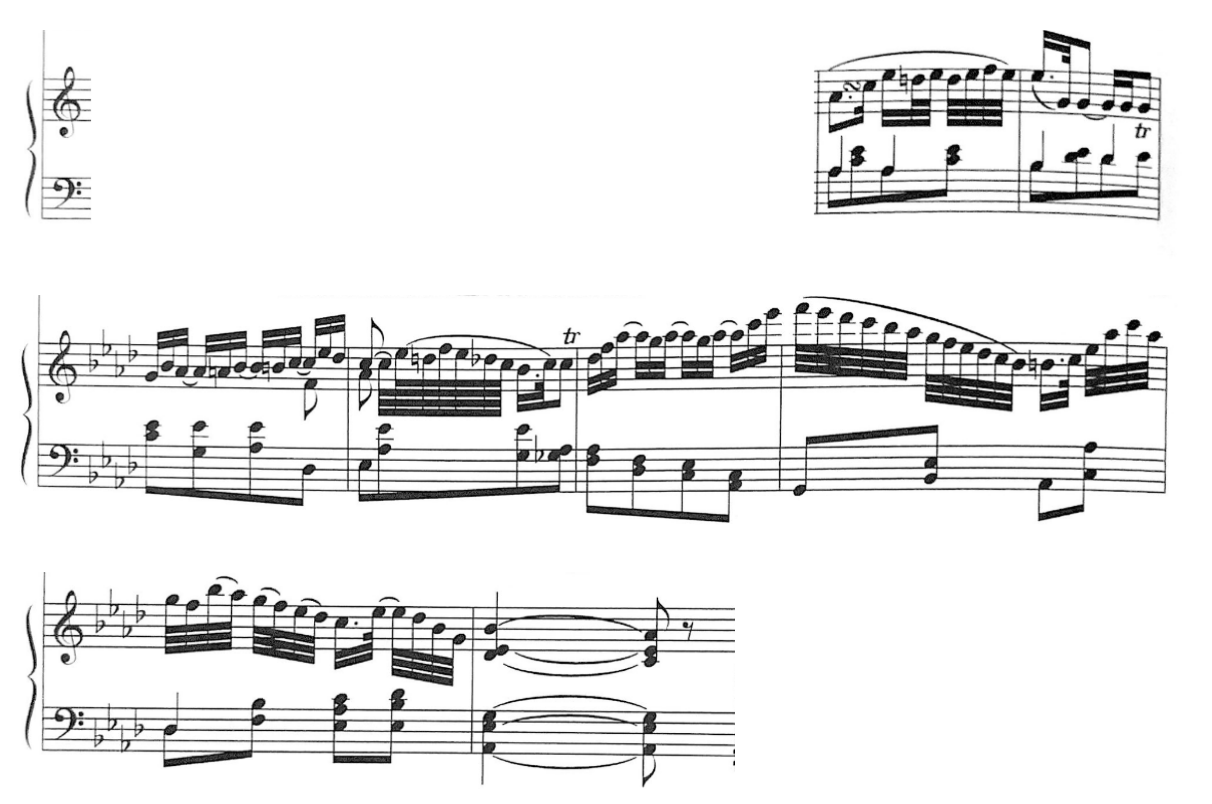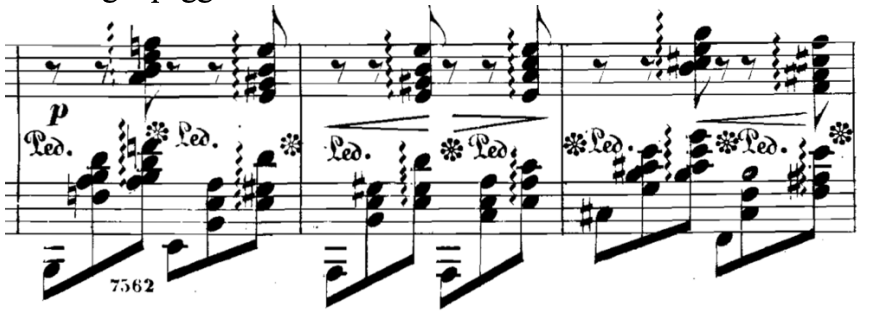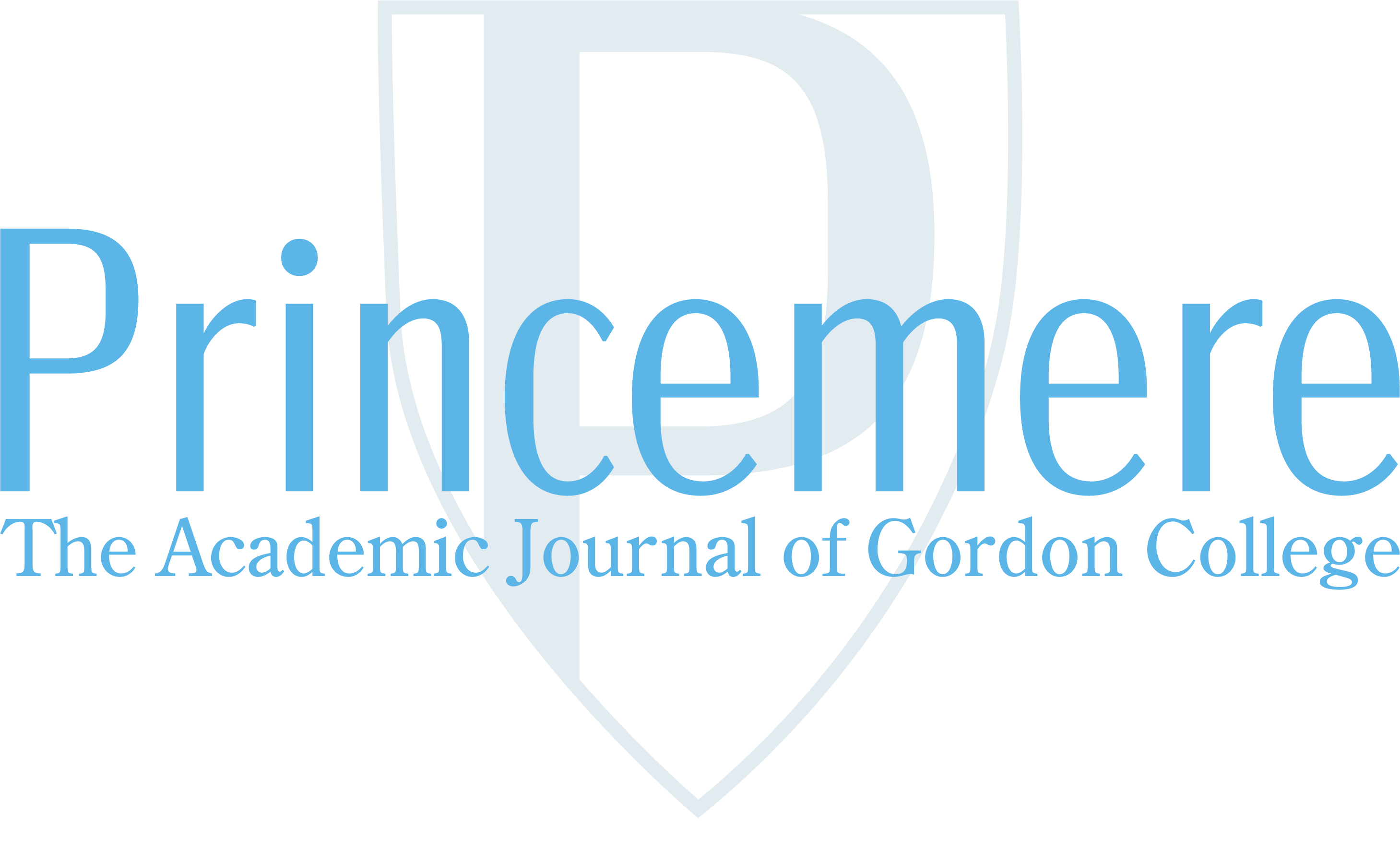by Eliza Weigelt ’25
In 1862, Belgian conductor and musicologist François-Joseph Fétis wrote in the 2nd edition of his Biographie universelle des musiciens the following about Louise Farrenc:
Unfortunately, the genre of large-scale instrumental music to which Madame Farrenc, by nature and formation, felt herself called involves performance resources which a composer can acquire for herself or himself only with enormous effort. Another factor here is the public, as a rule not a very knowledgeable one, whose only standard for measuring the quality of a work is the name of its author. If the composer is unknown, the audience remains unreceptive, and the publishers, especially in France, close their ears anyway when someone offers them a halfway decent work; they believe in success only for trinkets. Such were the obstacles that Madame Farrenc met along the way and which caused her to despair.1
Fétis was an ardent supporter of Farrenc– in fact, the following year he would go on to conduct the Geneva premiere of her 3rd Symphony as he had conducted the premieres of her two previous symphonies in Brussels. Fétis’ two noted obstacles in the way of Farrenc’s success– lack of performance resources and lack of name recognition from audiences– highlight the challenges a woman attempting to make her way in the realm of 19th-century music. Despite these obstacles, Louise Farrenc was noteworthy and unrivaled among her peers for her individuality and contributions as a performer, instructor, professor, composer, and scholar.
Louise Farrenc was an exceptional musician born into a society where women had more opportunities to engage in music than ever before but still experienced limitations. As the middle class across Western Europe grew in size, wealth, and status due to the innovations of the Industrial Revolution and cultural shifts from global political revolutions, musical education and skill began to be seen as a sign of status, particularly with young women learning piano in the home. Meanwhile, outside the home, public conservatories were beginning to allow women to receive higher-level formal musical instruction. This higher-level education, however, was not fully equal
—————————————————————————————————————————————————-
1. François-Joseph Fétis, Biographie universelle des musiciens et bibliographie Générale de la musique. Deuxième edition (Paris, Firmin Didot Frères, 1866-1868), pg. 186-188.
to what men would have received at the same institutions: all instruction was segregated by gender, and most women’s courses were abbreviated to cover what material was deemed necessary for women to learn, resulting in two-year paradigms as opposed to the three-year paradigms common for men. 2
Born on 31 May 1804 in Paris into the Dumont family of sculptors and royal painters (including some female artists), Farrenc was the first musician in her family, and began piano and solfège lessons under Madame Cécile Soria (a student of composer Muzio Clementi) at age six.3 Farrenc later studied piano under composers Ignaz Moscheles and Johann Nepomunk Hummel, a former student of Mozart. At age 15, Farrenc sought out Antonín Reicha at the Paris Conservatoire for private composition and orchestration lessons, since at that time women were not allowed to take composition courses at the Conservatoire; Farrenc studied consistently with Reicha for two years, at which point she placed her lessons on pause, later returning to them after her marriage and subsequent travels. Aristide Farrenc, her husband ten years her senior, was an amateur flautist and oboist who was studying at the Conservatoire at the time; after their marriage in 1821, Aristide established a publishing firm that included all of Louise’s early piano works in its catalog and remained active until its dissolution in 1840. The Farrenc marriage was uniquely modern, and, as Farrenc scholar Bea Friedland describes, “achieved a blend of mutuality and independence almost unheard-of in the nineteenth century, and even now an ideal more pledged than realized. Theirs was a reciprocal influence, for they matured together, musically and intellectually, and the special
————————————————————————————————————————-
2. Judith Tick, Margaret Ericson, and Ellen Koskoff, “Women in music,” Grove Music Online, 2001, https://www.oxfordmusiconline.com/grovemusic/view/10.1093/gmo/9781561592630.001.0001/ omo-9781561592630-e-0000052554.
3. Christin Heitmann, “Louise Farrenc,” trans. Nicole-Denise Kadach, in New Historical Anthology of Music by Women, ed. James R. Briscoe (Bloomington: Indiana University Press, 2004), 170-173.
strengths of each nourished the other.”4 Together the Farrencs had one daughter, Victorine Louise, who was born in 1826 and died in 1859 at the age of 32 from a disabling disease. 5
From 1825 to 1839, Farrenc’s compositional output mainly centered around works for solo piano, including dances, scherzos, rondinos, variations on themes, and études. All of her works from this period were issued by her husband’s publishing firm and published in London, England and Bonn, Germany. Of particular note from this era in Farrenc’s compositional career is her Air russe varié, written in 1836; the piece received a favorable review in the German music periodical Neue Zeitschrift für Musik from Robert Schumann, who described it as “so sure in outline, so logical in development…that one must fall under [the variations’] charm, especially since a subtle aroma of romanticism hovers over them.”6 Also noteworthy from this time in Farrenc’s work is her set of 30 Études, published in 1840. The 30 Études are written in all major and minor keys, possibly imitating the work of J. S. Bach in The Well-tempered Clavier, and present a variety of historical styles. French music critic Maurice Bourges wrote of them in La revue et gazette musicale, saying that the collection would become a classic “not only to develop technique but also to mold taste.” In 1845, the collection was adopted by the Paris Conservatoire as required study for all piano classes, and it was later reissued in 1886, a sign of its enduring popularity and pedagogical value. 7
The 1840s saw the beginning of Farrenc’s career in academia and the development of her more mature compositional style after the dissolution of Aristide’s publishing firm in 1840. In
——————————————————————————————————————————————————
4. Bea Friedland, “Louise Farrenc (1804-1875): Composer, Performer, Scholar,” The Musical Quarterly 60, no. 2 (1974): 262, http://www.jstor.org/stable/741636.
5. Bea Friedland, “Farrenc Family,” Grove Music Online, 2001, https://www.oxfordmusiconline.com/grovemusic/view/10.1093/gmo/9781561592630.001.0001/ omo-9781561592630-e-0000009336.
6. Friedland, “Louise Farrenc (1804-1875): Composer, Performer, Scholar,” 264.
7. Friedland, “Farrenc Family.”
1842, Farrenc was appointed to be a professor of piano at the Paris Conservatoire by the progressive director of the Conservatoire Daniel Auber, a position she held until her retirement in 18738. Farrenc was the first and only woman in the 19th century to hold a permanent chair of such rank and importance at a conservatory, and while her appointment was unprecedented and trailblazing for women in musical academia, she still was limited by the conventions of the day, such as only being allowed to teach female students. Despite the societal limitations of the day, Farrenc was distinguished by her excellence in teaching as evidenced by her highly skilled pupils, a large proportion of which won competitions and would go on to have professional careers. One of Farrenc’s most skilled pupils was her own daughter Victorine, who entered the Conservatoire in 1843 and won the premier prix for piano in 1844. Victorine’s professional career, though cut short by her untimely death, included many performances connected to her mother’s compositions, such as premiering her mother’s chamber works involving piano at some salon concerts in Paris and playing Beethoven’s “Emperor” concerto at the Brussels and Paris premieres of her mother’s First Symphony in 1845. 9
Farrenc’s compositional output in the 1840s shifted away from solo piano works to large orchestral works, such as her overtures, her three symphonies, and her unfinished Piano Concerto in B minor. The overtures, often in sonata form, were performed frequently in Paris at the time and received favorable reviews, including one from contemporary and renowned composer Hector Berlioz, who wrote (somewhat misogynistically) of the 2nd overture that it was “well written, and orchestrated with a talent rare among women.”10 Her three symphonies, composed in 1841, 1845, and 1847 respectively, were all unpublished but championed by Farrenc’s friend Fétis, who
————————————————————————————————————————————————————-
8. Friedland, “Farrenc Family.”
9. Friedland, “Farrenc Family.”
10. Friedland, “Louise Farrenc (1804-1875): Composer, Peformer, Scholar,” 266.
conducted performances of all three in Paris, the first two in Brussels, and the third in Geneva. The symphonies, though quite beautiful, tend toward a more Classical style than the more daring early Romantic styles popular in Paris at the time, which is likely why they failed to gain more popularity. The unfinished Piano Concerto, by contrast, leaves the Classical tradition behind, and its “stylistic freedom and sophisticated handling of the material suggest an aesthetic breakthrough which, owing perhaps to certain developments in the composer’s later life, never came fully to fruition.”11 Only two movements of the concerto were finished, with the third movement existing only in partial score. Farrenc also composed two piano quintets and two piano trios in 1839, 1840, and 1844 respectively.
The 1850s were a decade of many successes for Farrenc as a composer and teacher. In 1850, Farrenc’s Nonet for winds and strings was premiered with celebrity Hungarian violinist Joseph Joachim as the soloist. The premiere received such positive acclaim that it convinced Auber, director of the Paris Conservatoire, to give Farrenc equal pay to her male faculty counterparts, an accomplishment unheard of in the 19th century. Victorine’s fame as a solo pianist was growing alongside her mother’s reputation as a teacher and composer, and Farrenc’s compositions were being regularly performed at recitals across Paris. Farrenc also composed her most successful chamber music works during these years; besides the famed Nonet that catapulted Farrenc to near-celebrity status, she also composed two violin sonatas, a cello sonata, two more piano trios, and a sextet for piano and winds. This decade of success ended abruptly in 1859 with the death of Victorine, after which Farrenc gave no concerts for a year and only taught. 12
—————————————————————————————————————————————————————–
11. Friedland, “Louise Farrenc (1804-1875): Composer, Peformer, Scholar,” 267.
12. Friedland, “Louise Farrenc (1804-1875): Composer, Performer, Scholar,” 271-272.
For the last 25 years of her life, Farrenc delved into research, editing, and the promulgation of early music in addition to her teaching at the Paris Conservatoire. Together with her husband Aristide, she co-authored and co-curated Le trésor des pianists, a 23-volume anthology of keyboard works from the 17th and 18th centuries. Aristide, who initiated the idea of the project, conducted the historical and biographical research and collected the original manuscripts and sources for the first eight volumes, while Farrenc contributed her expertise in early performance practice, particularly on Baroque ornamentation. Upon Aristide’s death in 1865, Farrenc completed the remainder of the 23 volumes on her own. Farrenc’s introduction in the first volume on Baroque signes d’agrément was later published posthumously as Traité des abréviations and became a resource for many pianists. While the couple often included early works in soirée concerts held in their home despite the lack of popular appeal for Baroque music at the time, in 1862 they specifically began a series of lecture-recitals on the contents of Le trésor des pianists at the acclaimed Salle Erard called “séances historiques du piano”; Farrenc continued these lecturerecitals with her pupils after Aristide’s death13. In 1861, Farrenc received the Chartier Prize for her contributions to chamber music from the Institut de France, a prize later awarded to notable composers such as César Franck and Gabriel Fauré; she would go on to receive the award again in 1869. 14 Surviving both her husband and her daughter, Farrenc died in Paris on 15 September 1875.
Of the wide variety of pieces in Farrenc’s body of work, one piece that captures her compositional voice and how her work compared to that of her contemporaries is her Trio for Clarinet or Violin, Cello, and Piano in E-flat major, Op. 44. Composed in 1856, the trio is comprised of four movements: I. Andante–Allegro Moderato, in sonata-allegro form with a slow
————————————————————————————————————————————————————–
13. Friedland, “Louise Farrenc (1804-1875): Composer, Peformer, Scholar,” 272-273.
14. Friedland, “Louise Farrenc (1804-1875): Composer, Peformer, Scholar,” 273.
introduction, II. Adagio, III. Minuetto: Allegro, and IV. Allegro, also in sonata-allegro form. The second movement, Adagio, is in ternary form: the A section (mm. 1-36) in A-flat introduces the lyrical a theme, first in the cello, then in the clarinet and later the piano, as well as the more measured b theme in the piano (m. 17). The modulatory B section, beginning in m. 37, moves through several key areas with driving rhythms and scalar motives before returning to A-flat major with the return of the A section in m. 75.

Figure 1. The opening theme presented in the cello from Farrenc’s Trio in E-flat major, op. 44, II. Adagio, mm. 1-8.15
Farrenc’s Op. 44 bears many similarities to Clara Schumann’s well-renowned Piano Trio in G minor, Op. 17. Composed 10 years earlier in 1846, Schumann’s piano trio for violin, cello, and piano is also comprised of four movements, opening and closing with sonata form movements sandwiching a Scherzo and Trio for the second movement and an Andante third movement, a structure likely intentionally emulated by Farrenc in her Op. 44.16 Both works feature elements of Baroque, Classic, and early Romantic compositional traits, though they are in differing keys (Eflat major for Farrenc versus G minor for Schumann). Farrenc’s Adagio and Schumann’s Andante
————————————————————————————————————————————————————-
15. Louise Farrenc, Trio for Clarinet or Violin, Cello, and Piano, Op. 44, ed. Simone Heilgendorff (Kassel, Germany: Furore Verlag, 1999), 4-5.
16. Clara Schumann, “Piano trio in G minor, Op. 17: Third Movement, Andante,” in Norton Anthology of Western Music, Volume Two: Classic to Romantic, ed. J. Peter Burkholder and Claude V. Palisca (New York: W. W. Norton & Company, 2019) 557-562.
especially share significant similarities. Both movements are in a modified ternary form in closely related keys to the overall tonal center of the work– Farrenc’s, in A-flat major, is in the subdominant key of the tonic E-flat major, and Schumann’s, in G major, is in the parallel major to the G minor tonic. Both pieces are in duple meter (Farrenc’s is in 2/4, Schumann’s in 6/8), and both have similar contrasting lyrical characters– a slower A section contrasted with a more animated B section

Figure 2. The opening theme presented in the piano from Schumann’s Piano Trio in G minor, Op. 17, III. Andante, m. 1-8.17
While there are many similarities between the two works that highlight just impactful Schumann’s writing was for her contemporaries, there are many differences between the two that illustrate Farrenc’s compositional ingenuity and how she built upon Schumann’s model. Farrenc’s writing tends toward more contrapuntal textures, perhaps evidence of the influence of her studies of historical music and her conservatory training, influences not present in Schumann’s career.
———————————————————————————————————————————————————–
17. Schumann, “Piano Trio,” 557.
Farrenc also writes with increasing virtuosity for the individual parts as the piece progresses as she develops the themes introduced in the opening section (see Figure 3). Schumann, by

Figure 3. Farrenc’s increasingly virtuosic treatment of the opening theme, taken from the piano in mm. 29-37. Of particular note is the rhythmic ornamentation present, with the syncopated tripletsixteenth notes and thirty-second note scalar runs.18
contrast, adds variety through increasing the complexity of the accompanimental figures underneath the relatively simple melodic lines (see Figures 4 and 5). Farrenc tends to emphasize
————————————————————-
18. Farrenc, Trio, 22.

Figure 4. One example of an accompanimental figure in Schumann’s work, from mm. 9-10, featuring arpeggiated sixteenth notes over the sustained bass. 19

Figure 5. A more complex accompanimental figure with a new texture from Schumann’s work (mm. 17-19) featuring rolled chords in both the left and right hand under the melody.20
more rhythmic complexity and layering throughout the piece, while Schumann emphasizes changes in texture (see Figure 5). Farrenc’s work features more chromaticism both harmonically and melodically than Schumann, especially with the modulatory B section and chromatic notes in melodic lines throughout (see Figure 6).

Figure 6. An example of the chromaticism present in Farrenc’s melodies and harmonic vocabulary, taken from the violin part in mm. 35-50, the beginning of the modulatory B section.21
Louise Farrenc was an outstanding musician, teacher, and scholar among her peers but especially among women in her lifetime, and she deserves more recognition than just what a minor composer with moments of brilliance would earn. Though she was heavily focused on the past and its forms and finding room for innovation within them, this fascination with synthesizing old
———————————————————————————————————————————–
19. Schumann, “Piano Trio”, 557.
20. Schumann, “Piano Trio,” 558.
21. Farrenc, Trio, 6.
traditions with new musical language was a curiosity she shared with both her predecessors, such as Haydn and Beethoven, and those that would follow, especially Brahms. Farrenc’s genius and breadth of knowledge and compositional skill was unacknowledged in her time because of the cultural environment she was in that was inhospitable to women succeeding in music outside of the home professionally, let alone in academia. There was no existing French nationalistic musical tradition in absolute music for her to work within, and she was the first person and woman in many areas of her life to pursue the paths she chose, such as being the first musician in her family and the first tenured female professor at a conservatory. Farrenc had to forge her own path in much of what she did as a musician, and that trailblazing spirit would light the French musical scene on fire around the time of her death with the French musical renaissance of the 1870s.22 Farrenc’s life and career are a model of dedication to craft and scholarship that was rare among even men in her era but serves as inspirational to men and women alike today.
———————————————————————————————————————————————————-
22. Friedland, “Louise Farrenc (1804-1875): Composer, Performer, Scholar,” 274.
Works Cited
Cason, T. Elizabeth. Notes 59, no. 3 (2003): 758–62. http://www.jstor.org/stable/901094.
Farrenc, Louise. Trio for Clarinet or Violin, Cello, and Piano, Op. 44. Edited by Simone Heilgendorff. Kassel, Germany: Furore Verlag, 1999.
Fétis, François-Joseph. Biographie universelle des musiciens et bibliographie générale de la musique. Deuxième edition. Paris: Firmin Didot Frères, 1866-1868.
Friedland, Bea. “Farrenc family.” Grove Music Online. 2001; Accessed 11 Nov. 2022. https://www.oxfordmusiconline.com/grovemusic/view/10.1093/gmo/9781561592630.001 .0001/omo-9781561592630-e-0000009336.
Friedland, Bea. “Louise Farrenc (1804-1875): Composer, Performer, Scholar.” The Musical Quarterly 60, no. 2 (1974): 257–74. http://www.jstor.org/stable/741636.
Jezic, Diane Peacock. “Louise Farrenc,” in Women Composers: The Lost Tradition Found, 120- 127. New York: The Feminist Press at the City University of New York, 1994.
Heitmann, Christin. “Louise Farrenc,” in New Historical Anthology of Music by Women, edited by James R. Briscoe, 170-173. Translated by Nicole-Denise Kadach. Bloomington: Indiana University Press, 2004.
Reich, Nancy B., and Natasha Loges. “Schumann [née Wieck], Clara.” Grove Music Online. 29 Mar. 2021; Accessed 18 Nov. 2022. https://www.oxfordmusiconline.com/grovemusic/view/10.1093/gmo/9781561592630.001 .0001/omo-9781561592630-e-90000380188.
Schumann, Clara. “Piano trio in G minor, Op. 17: Third Movement, Andante,” in Norton Anthology of Western Music, Volume Two: Classic to Romantic, edited by J. Peter Burkholder and Claude V. Palisca, 557-562. New York: W. W. Norton & Company, 2019.
Tick, Judith, Margaret Ericson, and Ellen Koskoff. “Women in music.” Grove Music Online. 2001; Accessed 18 Nov. 2022. https://www.oxfordmusiconline.com/grovemusic/view/10.1093/gmo/9781561592630.001 .0001/omo-9781561592630-e-0000052554.
